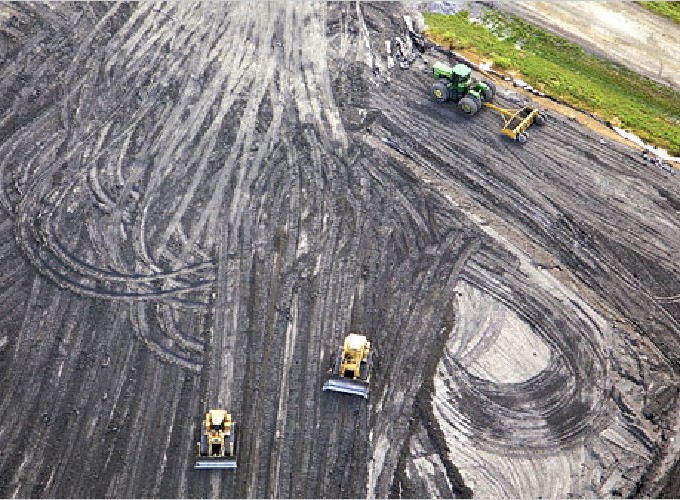Coal ash is a coal combustion residue that is a major byproduct of coal-powered electricity generation. Coal ash often contains contaminants including arsenic, boron, chromium, and sulfide. In 2008, Perry County’s Arrowhead landfill became the recipient of 2.3 million m3 of coal ash removed from the Emory and Clinch Rivers after a rupture of TVA Kingston Fossil Plant’s coal ash containment site. This landfill is adjacent to several residences and the upstream of small tributaries that run through fields of cattle and into local creeks. We surveyed surface water around the landfill in Summer 2013 and Jan 2014 to determine if the water quality was affected by the landfill. The conductivity, total dissolved solids, and arsenic concentration of the water directly running off and adjacent to the landfill were significantly higher than a control stream that does not interact with the landfill (P < 0.01). Arsenic levels were higher than EPA drinking water, but not surface water, guidelines. Concentrations of other indicators of coal ash such as boron, chromium, and sulfide were not significantly different from control. This preliminary evidence indicates that the landfill is having an effect on the water quality of tributaries to Chocolocco Creek. Coal ash is a coal combustion residue that is a major byproduct of coal-powered electricity generation. Coal ash often contains contaminants including arsenic, boron, chromium, and sulfide. In 2008, Perry County’s Arrowhead landfill became the recipient of 2.3 million m3 of coal ash removed from the Emory and Clinch Rivers after a rupture of TVA Kingston Fossil Plant’s coal ash containment site. This landfill is adjacent to several residences and the upstream of small tributaries that run through fields of cattle and into local creeks. We surveyed surface water around the landfill in Summer 2013 and Jan 2014 to determine if the water quality was affected by the landfill. The conductivity, total dissolved solids, and arsenic concentration of the water directly running off and adjacent to the landfill were significantly higher than a control stream that does not interact with the landfill (P < 0.01). Arsenic levels were higher than EPA drinking water, but not surface water, guidelines. Concentrations of other indicators of coal ash such as boron, chromium, and sulfide were not significantly different from control. This preliminary evidence indicates that the landfill is having an effect on the water quality of tributaries to Chocolocco Creek.
 Photo by rawpixel on Unsplash
Photo by rawpixel on Unsplash

